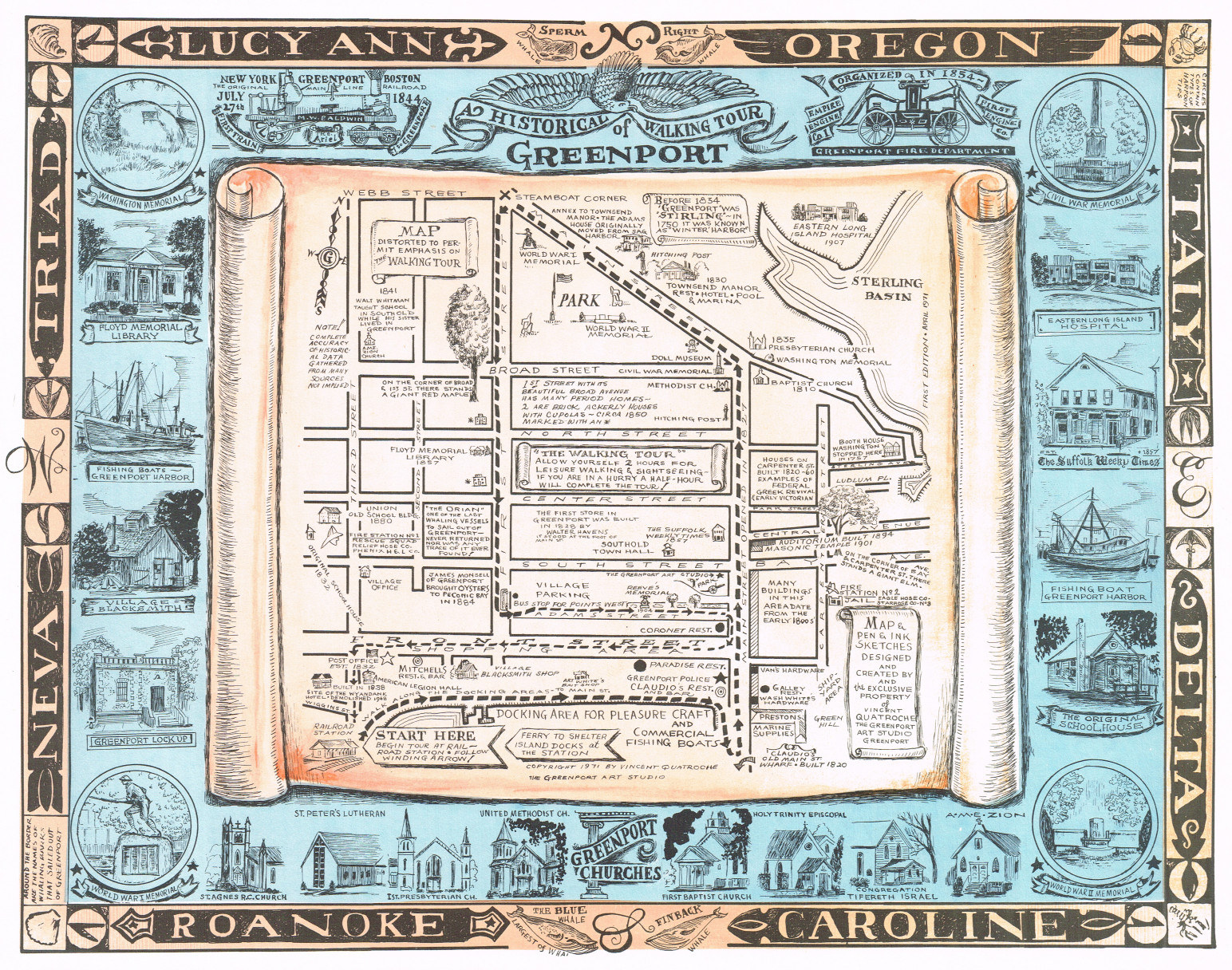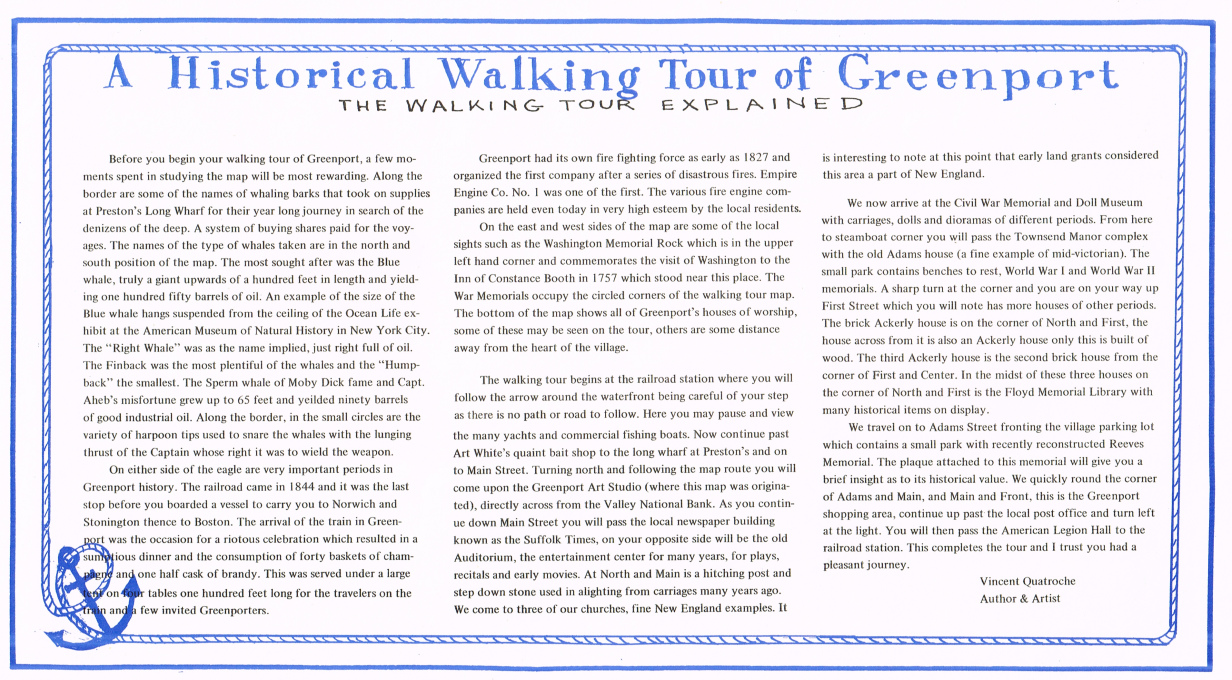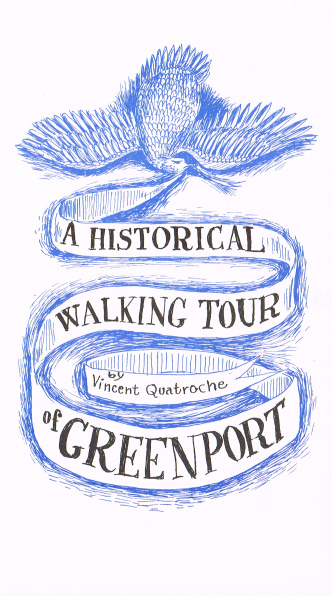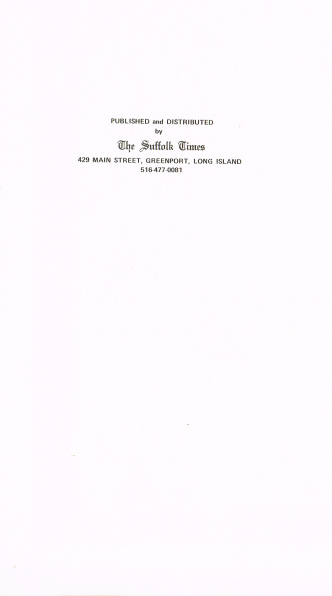The Walking Tour Explained
Before you begin your walking tour of Greenport, a few moments spent in studying the map will be most rewarding. Along the border are some of the names of whaling barks that took on supplies at Preston's Long Wharf for their year long journey in search of the denizens of the deep. A system of buying shares paid for the voyages. The names of the type of whales taken are in the north and south position of the map. The most sought after was the Blue whale, truly a giant upwards of a hundred feet in length and yielding one hundred fifty barrels of oil. An example of the size of the Blue whale hangs suspended from the ceiling of the Ocean Life exhibit at the American Museum of Natural History in New York City. The "Right Whale" was as the name implied, just right full of oil. The Finback was the most plentiful of the whales and the "Humpback" the smallest. The Sperm whale of Moby Dick fame and Capt. Aheb's misfortune grew up to 65 feet and yielded ninety barrels of good industrial oil. Along the border, in the small circles are the variety of harpoon tips used to snare the whales with the lunging thrust of the Captain whose right it was to wield the weapon.
On either side of the eagle are very important periods in Greenport history. The railroad came in 1844 and it was the last stop before you boarded a vessel to carry you to Norwich and Stonington thence to Boston. The arrival of the train in Greenport was the occasion for a riotous celebration which resulted in a sumptious dinner and the consumption of forty baskets of champagne and one half cask of brandy. This was served under a large tables one hundred Oil feet long for the travelers on the train and a few invited Greenporters.
Greenport had its own fire fighting force as early as 1827 and organized the first company after a series of disastrous fires. Empire Engine Co. No. 1 was one of the first. The various fire engine companies are held even today in very high esteem by the local residents.
On the east and west sides of the map are some of the local sights such as the Washington Memorial Rock which is in the upper left hand corner and commemorates the visit of Washington to the Inn of Constance Booth in 1757 which stood near this place. The War Memorials occupy the circled corners of the walking tour map. The bottom of the map shows all of Greenport's houses of worship, some of these may be seen on the tour, others are some distance away from the heart of the village.
The walking tour begins at the railroad station where you will follow the arrow around the waterfront being careful of your step as there is no path or road to follow. Here you may pause and view the many yachts and commercial fishing boats. Now continue past Art White's quaint bait shop to the long wharf at Preston's and on to Main Street. Turning north and following the map route you will come upon the Greenport Art Studio (where this map was originated), directly across from the Valley National Bank. As you continue down Main Street you will pass the local newspaper building known as the Suffolk Times, on your opposite side will be the old Auditorium, the entertainment center for many years, for plays, recitals and early movies. At North and Main is a hitching post and step down stone used in alighting from carriages many years ago. We come to three of our churches, fine New England examples. It is interesting to note at this point that early land grants considered this area a part of New England.
We now arrive at the Civil War Memorial and Doll Museum with carriages, dolls and dioramas of different periods. From here to steamboat corner you will pass the Townsend Manor complex with the old Adams house (a fine example of mid-victorian). The small park contains benches to rest, World War I and World War II memorials. A sharp turn at the corner and you are on your way up First Street which you will note has more houses of other periods. The brick Ackerly house is on the corner of North and First, the house across from it is also an Ackerly house only this is built of wood. The third Ackerly house is the second brick house from the corner of First and Center. In the midst of these three houses on the corner of North and First is the Floyd Memorial Library with many historical items on display.
We travel on to Adams Street fronting the village parking lot which contains a small park with recently reconstructed Reeves Memorial. The plaque attached to this memorial will give you a brief insight as to its historical value. We quickly round the corner of Adams and Main, and Main and Front, this is the Greenport shopping area, continue up past the local post office and turn left at the light. You will then pass the American Legion Hall to the railroad station. This completes the tour and I trust you had a pleasant journey.
Vincent Quatroche, Artist & Author



